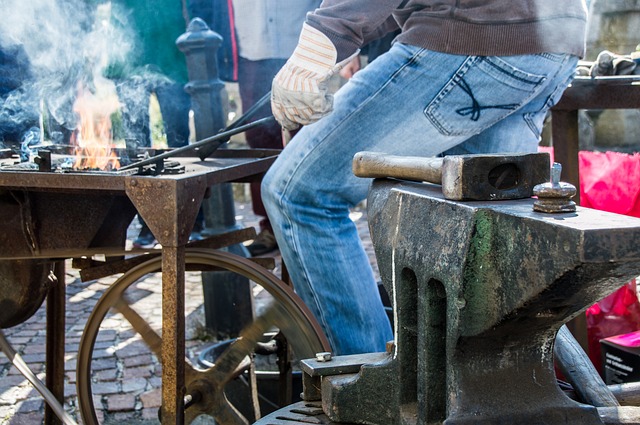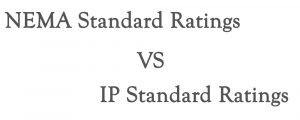
Usually, the metal sheets that has the capability to resist corrosion has some very special protective layering that is effectively preventing the metallic structure from undergoing metal corrosion or oxidation reactions. However, with good stainless steel, the protection from corrosion comes from the chromium component of the metal. How does it give protection? The chromium metal reacts with oxygen and successfully forms a layer of chromium oxide that aids the metal steel protected beneath to be able to effectively resist corrosion.
In the contrary, carbon steel is also good at many different things. However, there is one catch. It is often vulnerable to corrosion formation because it does not have the proper protection form oxidation. When a company needs an enclosure that has corrosion resistance feature (like companies in food and marine offshore sector) the most common steel used is stainless steel.
With this in mind, there are several applications that fully require steel that is able to resist breaking or being deformed when brutal force is applied or when it is being pulled by it. The force is usually measured using two of the basic metrics: tensile and yield strength. Each measurement requires different types of testing phases.
Yield strength refers to the amount of force that will cause permanent damage to steel because of bending or denting. Tensile strength is the force required to cause steel to crack or rupture.
Major Differences of Carbon Steel and Stainless Steel
Tensile Strength and Yield Strength
Because of its very low carbon content, most of the stainless steel being utilized is generally softer than the carbon steel because it has a low yield strength. This can only mean that stainless steel is more vulnerable to breakage (such as denting or bending) compared to a carbon steel. Most of the carbon steel when it is being used to manufacture electronics enclosure is brittle and it tends to have a lower tensile strength compare to stainless steel. With this in mind, any application will make the carbon steel maintain the integrity of its shape almost near to its breaking point, however it will immediately crack when it passes its limitation. For example, if you use a carbon steel knife blade, it can strongly resist breaking. But when it has reached its tensile strength point, it will break.
Machining and Welding
When it comes to customizing electronic enclosure, there is a primary process for majority of the customers. It is very vital that the users will effectively determine the key difference between stainless steel and carbon steel. Electrical box customization is done through machining and welding.
With this in mind, stainless steel is widely known for being very hard when it undergoes machining tools because it will require special techniques for it to be machined very efficiently. It is also very difficult to weld compare to other material such as carbon steel. It just requires so much effort but the process is not impossible because it is being done everyday by different companies.
Aesthetics
While a good visual appearance is not the top priority to look at electronics enclosure, it can play a crucial role in determining the type of environment where it will be installed at. In light of this, it is worth noting what type of visual qualities you are looking at each type of metal steels.
Let us look at the two steels performance when it comes to aesthetics.
Carbon steel is good looking steel material because it got a smooth finish, sleek-look that is usually associated with a steel material. Also, the users can customize the carbon steel electronics enclosure in any way they wanted because it can be powder coated and arrive at several finishes. It provides a great variety of options when it comes to wide range of visual options applicable to almost all kind of environment. The only downside is it does not have the shine and luster of their other steel cousins such as stainless steel.
On the other hand, stainless steel is very popular when it comes to attractive visual qualities. The chromium component of the stainless steel has an additional benefit aside from the protective covering: it effectively creates a very good and brilliant eye-catching look. The aesthetic qualities, in addition to the protective layering makes the stainless steel a very good choice for users who want to have installed enclosures for several, wide uses.
What are the Stainless Steel Ideal Qualities?
Even if some of the benefits of stainless steel and carbon can be almost the same, they have specific characteristics that can come in handy went it comes to different applications. In order to make sure that you are receiving the right material for your enclosure application, it is very important to be able to fully understand the differences and key similarities between these to metal steels. In the following qualities below, we will be talking about the widely used applications for these two metal steels.
Almost all steels are primarily made of carbon and iron. In some cases, there are steels that has additional elements that give them their specific, unique, and handy properties. Just by effectively controlling and changing the composition of stainless steel, steelmakers can create a very huge variety of stainless steel alloys perfectly suitable for different uses and functions.
The term “carbon steel” typically means any steel whose primary ingredients are iron and carbon. The carbon content of these steels can range from 0.05 percent (in “mild” or low-carbon steels) to three percent (in ultra high-carbon steels).
With this in mind, one of the key steel components used to make stainless steel are nickel, molybdenum, and nickel. Stainless steel should contain at least 1.5% chromium in terms of its mass and composition. There are cases that the chromium composition is higher in widely used stainless steels. There are varieties of stainless steel that do contain some very good quantities of other elements. Such as nickel and molybdenum. Steel manufacturers add this for the additional desirable properties.
When it comes to carbon steel, though it has a very strong quality, it can corrode easily. So it is very careful to determine what kind of application you want for your electronics enclosure for you to make the right choice.



